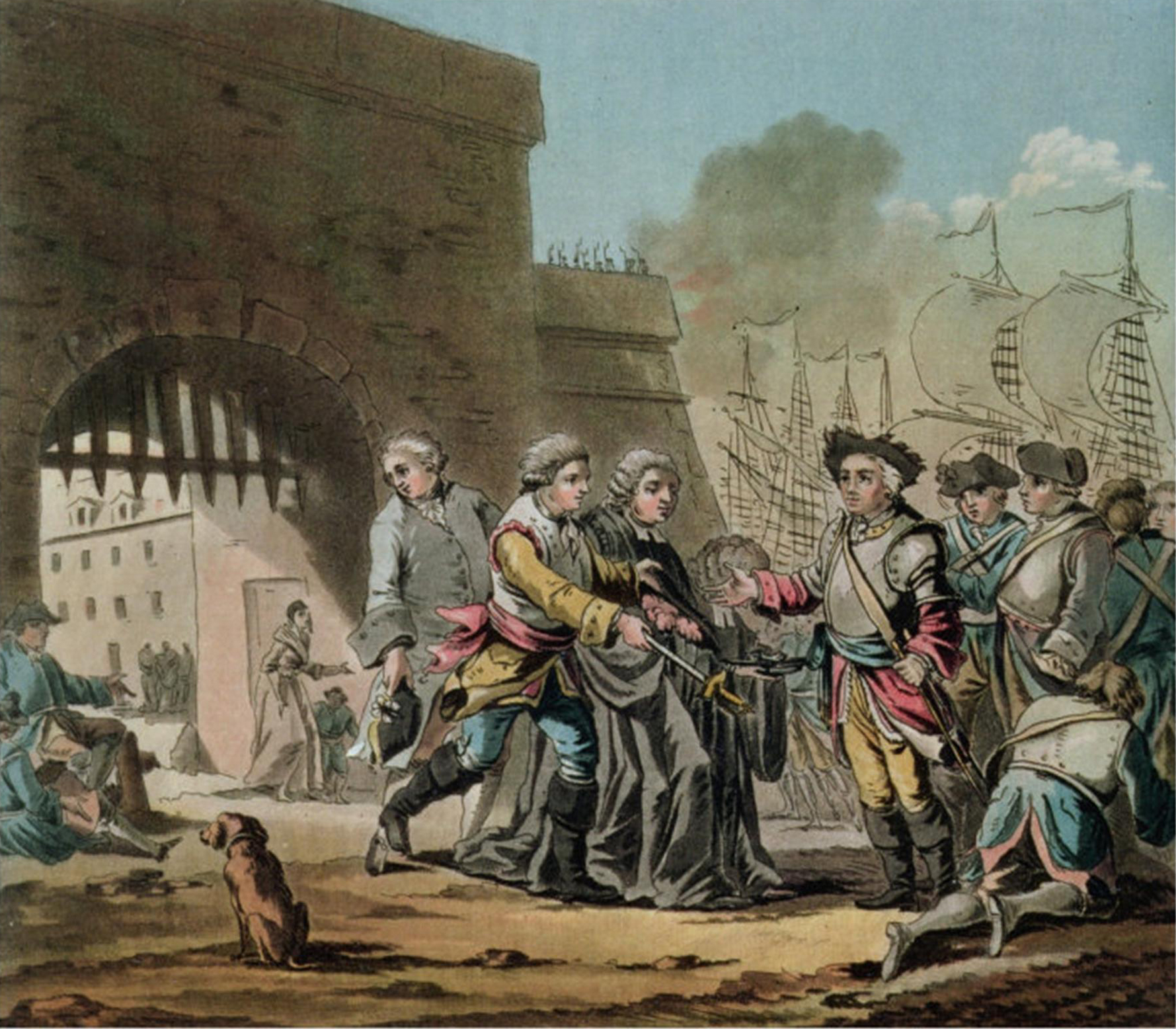
The French, commanded by Marquis Joseph Dupleix, governor of
Pondicherry, attacked the British settlement 80 miles north at Madras (now
Chennai) (5 September). After a five-day attack by land, and a bombardment from
the sea, the fort surrendered. Some of the defenders, including Robert Clive
who was then a clerk, escaped to Fort St. David.
The siege of Madras in 1746 for Joseph Francois Dupleix troops and ships of La Bourdonnais. The city surrendered in September 1746.
Battle of Madras. Nawab Anwar-ud-din, who had allied himself with the British, arrived near Madras with a large army. The French sortied from the captured city and easily defeated the Nawab’s army.
The French occupied the town for the duration of the war. Despite Dupleix promise earlier to hand the territory over to the Nawab of the Carnatic, Dupleix refused to do so. A force of 10,000 sent by the Nawab to enforce the agreement was routed by a small French force led by Captain Louis Paradis. The French subsequently tried to take Fort St David but found the resistance much tougher, and were ultimately forced to withdraw.
SIEGE OF MADRAS. MAURILLE ANTOINE MOITHEY, 1750
This coloured map depicts a French success of 1746 when 1,200 French
regulars, supported by warships from the French colony of Mauritius, captured
Fort St George after only a two-day siege. The garrison suffered only six dead,
while the British fleet in the area refused to attack the larger French fleet.
Madras was returned under the Peace of Aix-la-Chapelle of 1748, under which the
British returned Louisbourg on Cape Breton stand. Madras did not fall again.
When word of the outbreak of the War of the AUSTRIAN SUCCESSION
reached India, the French governor general there, Marquis Joseph François
Dupleix (1696-1763), tried to arrange neutrality between the French and the
British East India Company. However, after Commodore Curtis Barnett led the
British fleet to clear Indian waters of French shipping, Dupleix called on
Admiral Bertrand François Mahé, comte de la Bourdonnais (1699-1753), to bring a
French fleet from Mauritius. Bourdonnais arrived at Pondichéry, the seat of
French government in India, in June 1746 with eight ships of the line and a
contingent of 1,200 troops. He engaged the British fleet, now under Commodore
Edward Peyton (who had succeeded in command after the death of Barnett), at the
Battle of Negapatam on July 25, 1746. Outsailed, Peyton was forced to make for
Hooghly. The naval engagement was followed during September 2-10 by the siege
of Madras. While Bourdonnais blockaded the city, Dupleix invaded it, accepting
its surrender on September 10. On September 21 Nawab Anwar-ud-din, allied with
the British, approached Madras. Rather than await the nawab’s attack, the
French forces sortied out from Madras and made short work of his army. This
victory was followed on November 3 by the Battle of St. Thomé, in which a force
of 230 French regulars and 730 native sepoys made a surprise assault on 10,000
of the nawab’s troops, completely routing them. After this Dupleix laid siege
to Fort St. George, a key British base near Madras. The operation extended to
April 1748, when Dupleix was forced to withdraw upon the arrival of a new
British fleet carrying reinforcements. Edward Boscawen (1711-61), the admiral
in command of the new fleet, conducted combined land and naval operations
against Pondichéry during August-October 1748. Dupleix held the British off
until the onset of the monsoon season forced the British fleet to withdraw and
the siege to be raised. Shortly after this the British and French in India
received word of the Treaty of Aix-la-Chapelle, signed on October 18, 1748,
ending the War of the Austrian Succession and, therefore, the First Carnatic
War as well. With regard to the Indian situation, the treaty restored Madras to
Britain. However, the treaty resolved no other issues of colonial trade and,
therefore, failed to create a lasting peace, and the First Carnatic War was
followed within a year by the SECOND CARNATIC WAR.
Further reading: M. S. Anderson, The War of the Austrian Succession 1740-1748 (London and New York: Longman, 1995); H. V. Bowen, Nigel Rigby, and Margarette Lincoln, eds., The Worlds of the East India Company (London: Boydell and Brewer, 2004).